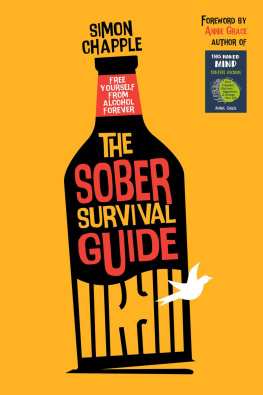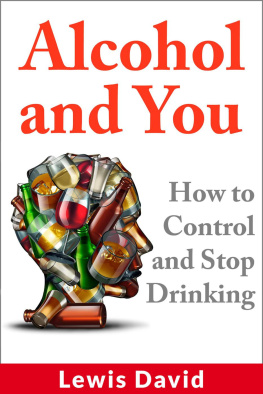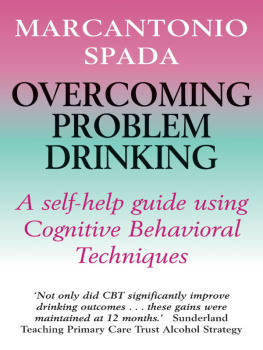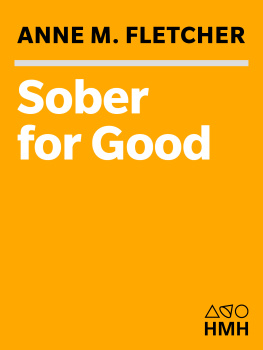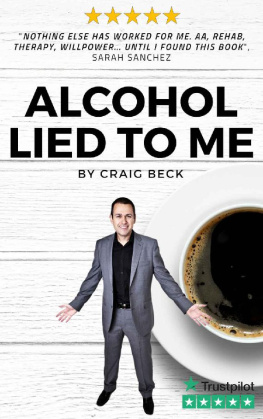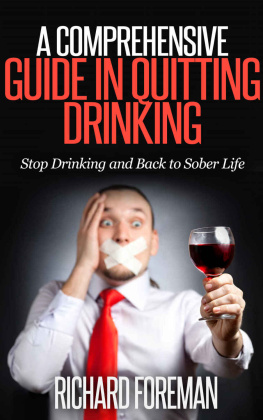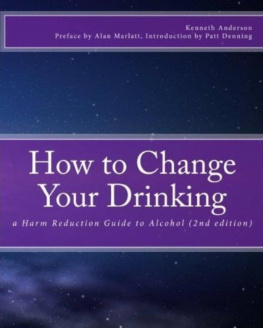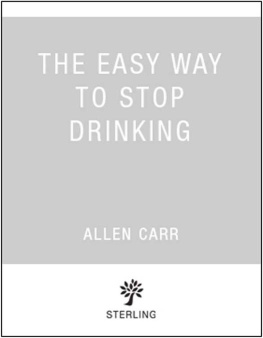A note on this digital edition
Workbook
This program includes tools such as checklists, formsand charts to help you take stock, set your goals, plan yourstrategies and track your progress. Because most eBooks do notsupport fillable forms, we have created an electronic workbook todownload onto your personal computer. You can choose to enter yourthoughts into the workbook on your computer (be sure to save to afile), or to print it off and fill it in with a pen or pencil. Youwill need to have Adobe Acrobat Reader installed on your computer toopen the file; if you dont have it already, you can download it forfree at https://get.adobe.com/reader
- Sections in the eBook thatcorrespond to the fillable tools in the workbook are numberedand noted with this workbook icon:

- To download the workbook, keythis address into the Internet browser on your personalcomputer: www.camh.ca/en/education/about/camh_publications/Documents/eBook_PDFs/SayingWhen/SayingWhen_Workbook.pdf
Mobile app
A condensed version of the Saying When programis also available as a free app for iPhone and iPad through iTunes.
More information and a link to the iTunes store can befound here: https://itunes.apple.com/ca/app/saying-when-how-to-quit-drinking/id881678936?mt=8
Preface to the revised edition
Saying When represents the endpoint oflessons learned from a long program of research on treatment for alcohol usedisorders. In the early stages of that research, my dream was to produce a self-helpprogram for people who intend to change their drinking without getting professionalhelp or joining Alcoholics Anonymous or another mutual help group. In my clinicalwork many clients said that years passed betweenthem recognizing the problem and seeking help. Often this delay was because theyperceived barriers to entering treatment. The most frequently identified barriersincluded fear of being defined as alcoholic, taking time from work or familyresponsibilities, and lack of services in rural communities. My dream was realizedwhen our research showed that Saying When byitselfyielded outcomes similar to those obtained when therapists dispensed theprogram.
This new edition continues to include only those components of theprogram that hundreds of successful clients in our studies consistently used toachieve abstinence or moderate drinking. It was gratifying to learn from reviewingthe recent research on self-help programs that SayingWhen remains a state-of-the-art program. This new edition required onlysmall changes. We incorporated recent findings relevant to the guidelines formoderate drinking. Some terms have changed since the last edition so words then inuse, such as alcoholic or problem drinkerwhich focus on the personhave beenreplaced in clinical practice by specified levels of alcohol use disorder whichfocus on the problem.
Repeatedly in my clinical work, clients asked what separates those whosucceed with the program from those who do not. The answer from our research isstraightforward: those who persistently apply thetechniques from Saying When usually succeed. Thisis a highly liberating and motivating findingit means that the key to success is inyour hands. You can benefit from the experience of others in terms of what workedfor them, and add to it your determination to change.
Saying When offers a well-testedprogram for those who have good reasons to quit or cut down on their drinking,believe this is the time to make the change, and prefer a self-help guide toattending a clinic. This book is also a useful adjunct for counsellors when helpingclients with drinking problems. Now retired from active research and treatment, Ifind it very rewarding to know that so many people continue to use Saying When and benefit from the efforts of myworking years.
Foreword by William R. Miller
When Dr. Sanchez-Craig began the research that led to Saying When , she was decades ahead of developments inthe field. Popular belief at the time was that there were only two kinds of peoplein the world: alcoholics who would be constitutionally incapable of drinking inmoderation, and non-alcoholics who could drink with impunity. In other words, therewas no one to use a book on moderation: alcoholics couldnt do it, andnon-alcoholics didnt need it. It was also widely assumed that people with alcoholproblems were incapable of changing on their own without treatment.
Four decades later, her pioneering perspective has become mainstream.Heavy drinking is a health risk for anyone. The fifth edition of the Diagnostic and Statistical Manual (DSM-V) recognizesthat alcohol problems occur all along a continuum of severity. As with chronicmedical problems, people benefit from different approaches depending where they areon this continuum. It is now widely recognized that alcohol problems are oftenresolved without formal treatment. Professional opinion has converged with researchfindings to agree that moderation is a feasible outcome, though not recommended forthose with more severe alcohol dependence. Physicians are encouraged to screenroutinely for heavy drinking as a health risk and to advise moderation.
But how should people go about moderating their drinking? Saying When offers science-based self-controlstrategies that have been developed and tested through 40 years of research. Thereare no unrealistic claims and promises. Instead, this book offers appropriateguidelines for considering whether this is a sensible approach, and a variety ofpractical strategies to try. In our U.S. studies we found that people working ontheir own with a self-help book like this were, on average, just as successful inchanging their drinking as those working with a counsellor using the samestrategies. Canadian studies (including Dr. Sanchez-Craigs own research) haveyielded similar findings.
The third edition of Saying When continues to make this approach readily available for people who want to cut down(or quit) their drinking. It describes in clear, straightforward language thebest-tested self-control methods to avoid risky and problematic alcohol use.
William R. Miller, Ph.D.
Emeritus Distinguished Professor of Psychology andPsychiatry
The University of New Mexico
Introduction
If your drinking is the cause of some of your problems, this guide canhelp you to quit or cut down. It offers a program that originated at the AddictionResearch Foundation in Ontario, Canada, and has been refined and tested for morethan 22 years. This self-help book is the final result of this long program ofresearch. It includes techniques that successful clients consistently used to bringtheir drinking under control. Since its launch, this guide has been usedsuccessfully by many hundreds of clients.
The clients who joined the program and contributed to the research werepeople who sought help because their drinking was a threat to their health, theirrelationships or their careers. They were highly motivated to change their drinkinghabits and made this goal a top priority for several months.
Even though drinking was affecting the lives of our clients, they werenot alcoholicsthey had not experienced symptoms of severe alcohol use disordersor problems with other drugs. Also, they were not suffering serious medical orsocial problems.
The program that helped our clients is outlined in this guide, step bystep, so you can apply it to your own situation.
The program can help you if, like our clients:
- you have good reasons for wanting to change yourdrinking habits
- you make your goal of quitting or cutting downa top priority for several months.


